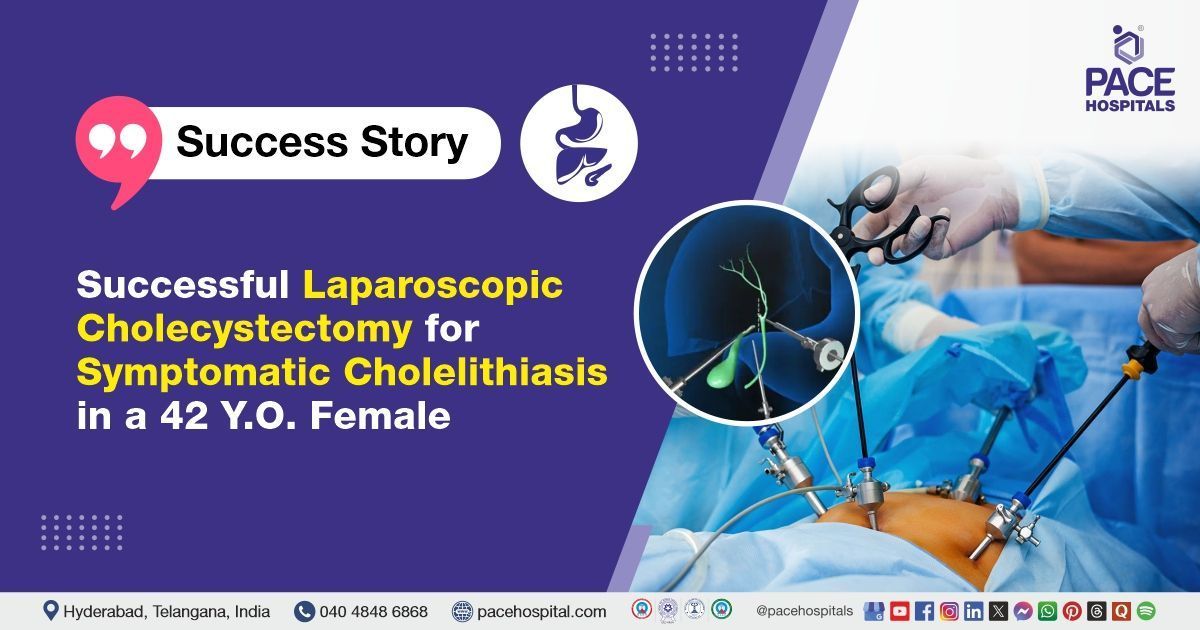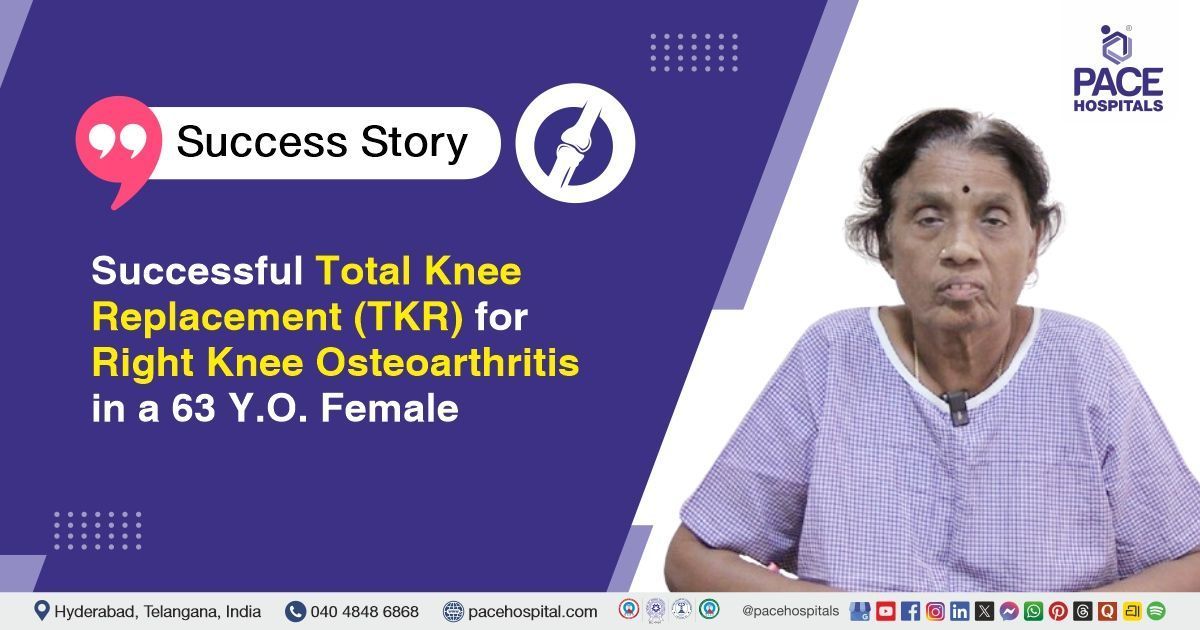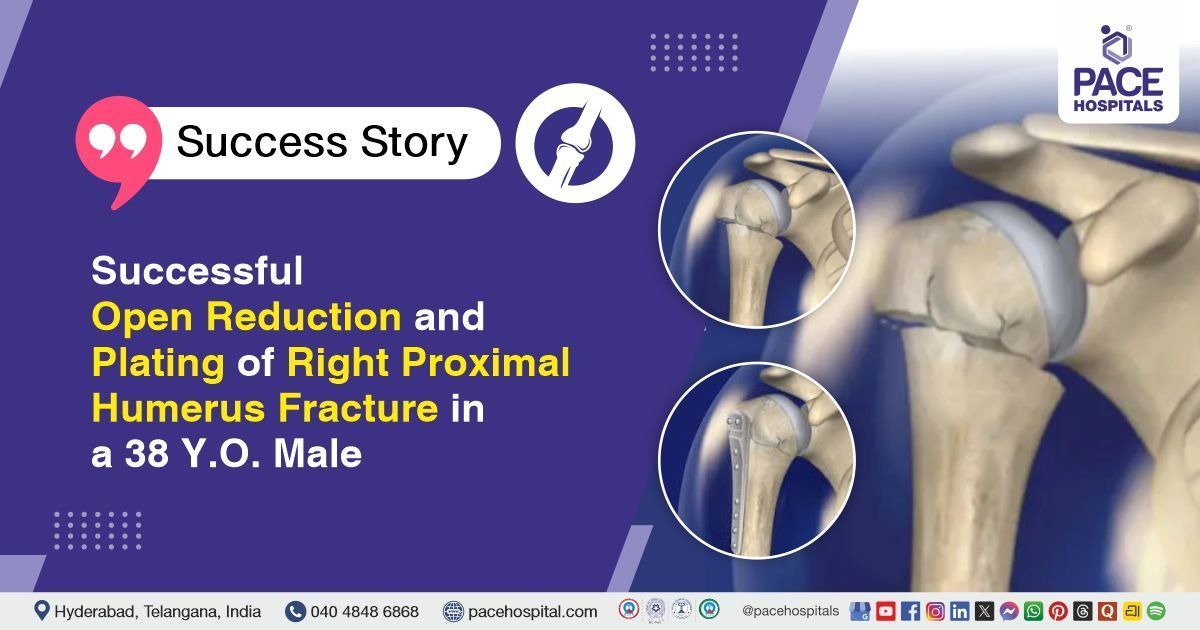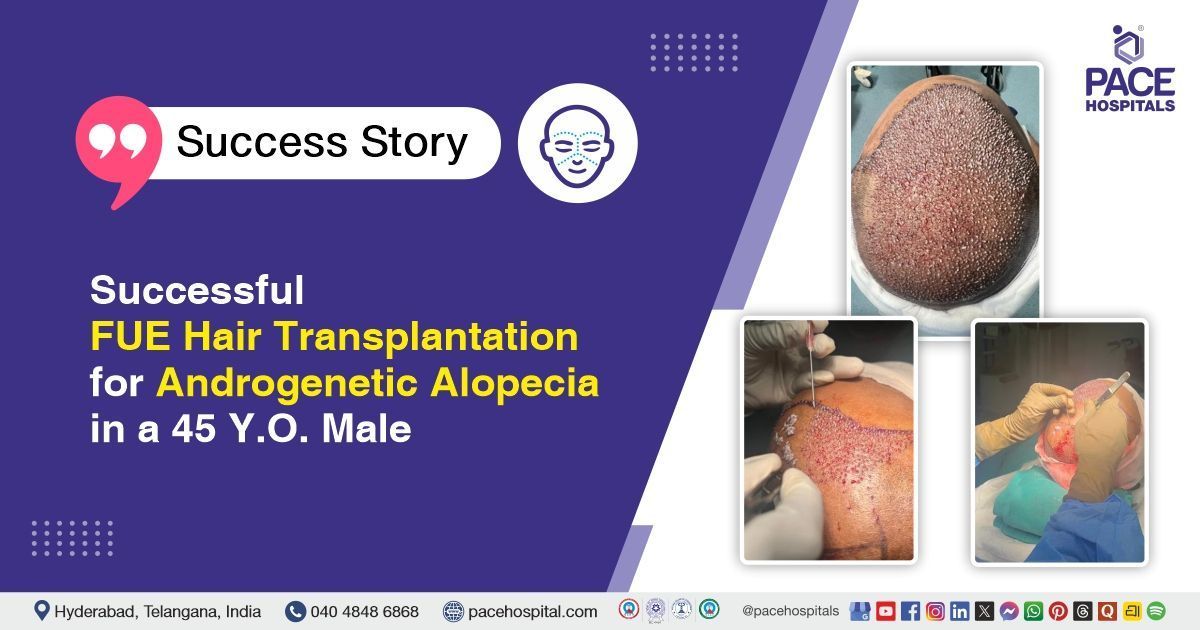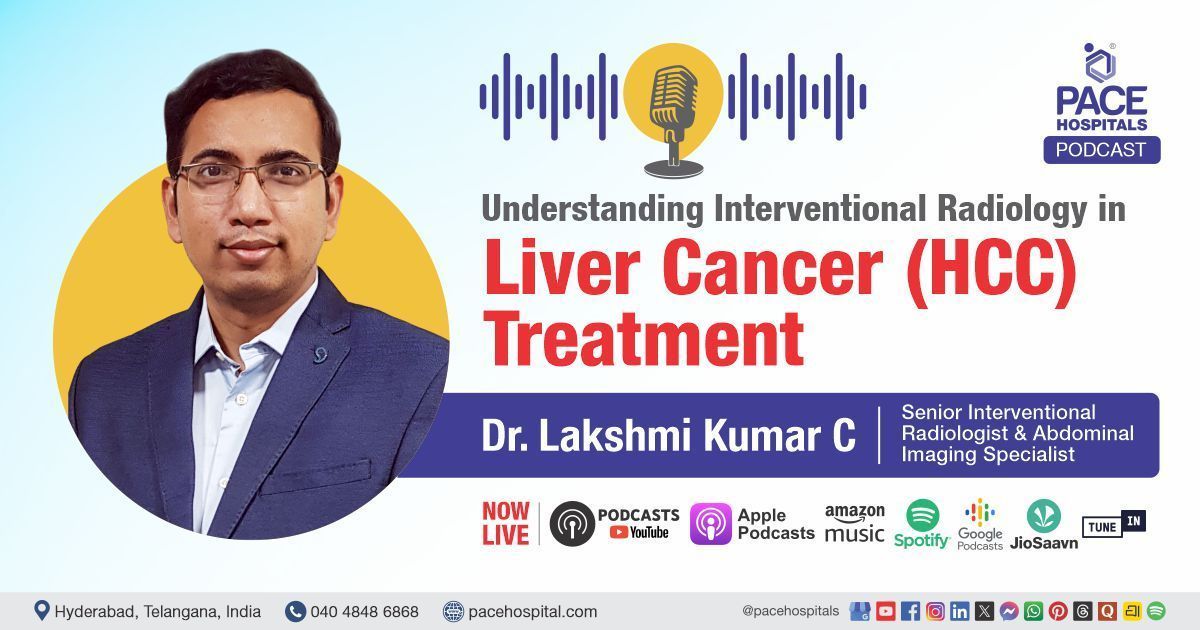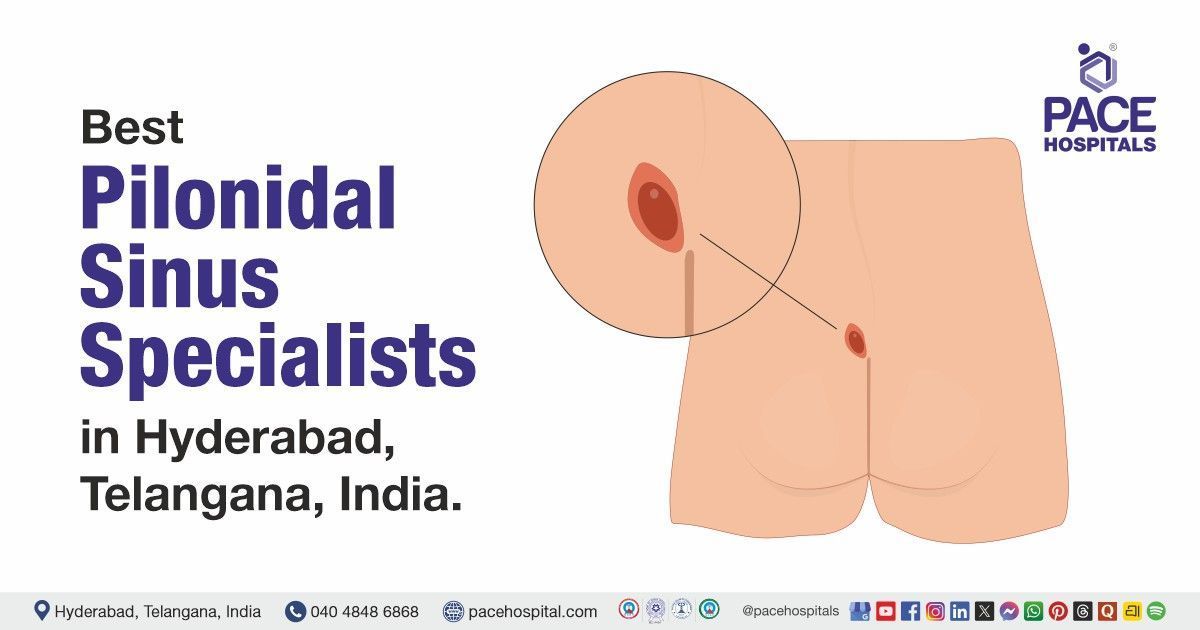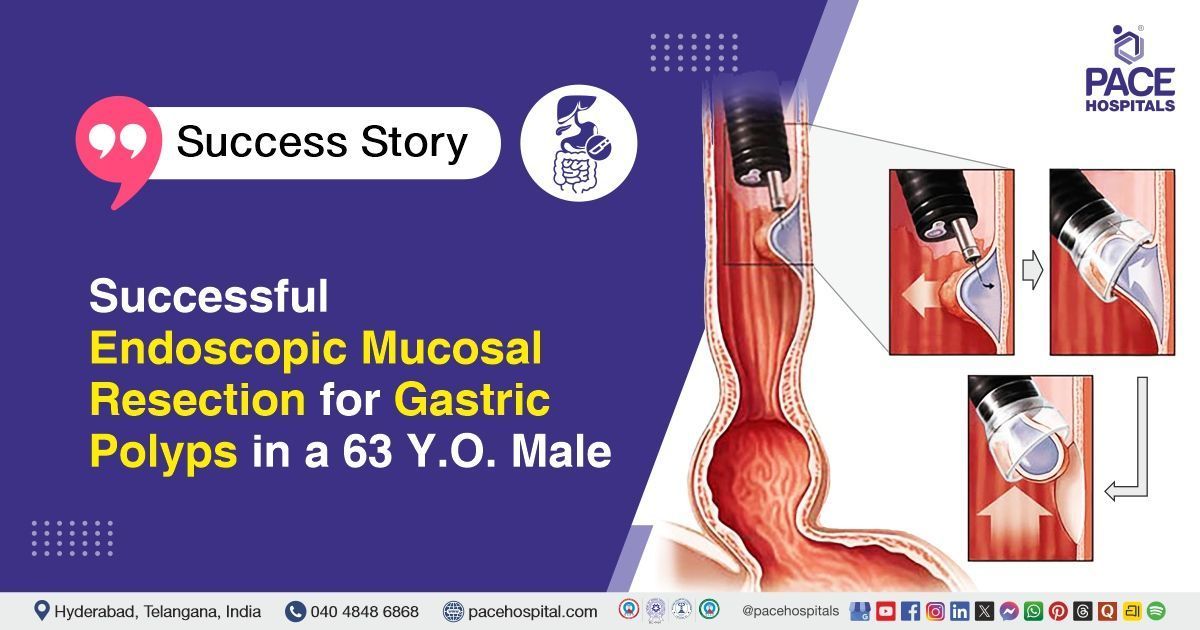Successful Lap. Cholecystectomy for Symptomatic Cholelithiasis in a 42 Y.O. Female
PACE Hospitals
PACE Hospitals' expert Surgical Gastroenterology team successfully performed a Laparoscopic Cholecystectomy on a 42-year-old female who presented with right upper abdominal pain and occasional episodes of epigastric burning for two months. The surgery was performed to relieve her symptoms and prevent further complications related to gallstone disease.
Chief Complaints
A 42-year-old female with a
body mass index (BMI) of 22 presented to the Surgical Gastroenterology Department at
PACE Hospitals, Hitech City, Hyderabad, with chief complaints of right upper abdominal pain for the past two months, accompanied by occasional episodes of epigastric burning. There was no history of fever,
jaundice, nausea, or weight loss. A detailed evaluation was carried out to determine the underlying cause of her symptoms.
Past Medical History
The patient has a surgical history significant for a Lower Segment Caesarean Section (LSCS) performed 20 years ago and an open appendectomy carried out 25 years ago. She has no significant comorbidities, and these medical conditions were important considerations in the planning of her treatment and surgical care.
On Examination
The patient was conscious, coherent, and oriented, with stable vital signs. On cardiovascular examination, S1 and S2 heart sounds were present. Central nervous system examination revealed no focal neurological deficits. Respiratory system examination showed bilateral air entry with normal vesicular breath sounds.
Abdominal examination revealed mild tenderness in the right upper quadrant without guarding, rebound tenderness, or palpable mass. Bowel sounds were normal, and there were no signs of jaundice or systemic abnormalities.
Diagnosis
Following clinical examination, the Surgical Gastroenterology team conducted a comprehensive assessment, including a detailed review of the patient’s medical history and a focused clinical evaluation. Routine blood investigations were performed and found to be within normal limits, with no signs of infection or liver dysfunction. The patient’s surgical history included a lower segment caesarean section (LSCS) and an appendectomy performed many years ago.
Diagnostic investigations included an abdominal ultrasonography, which revealed a partially distended gallbladder with multiple small calculi and a 16 x 18 mm hemangioma in the right lobe of the liver. The patient was diagnosed with symptomatic cholelithiasis.
Based on the confirmed diagnosis, she was advised to undergo
Gallstones Treatment in Hyderabad, India, under the expert care of the Surgical Gastroenterology team, ensuring accurate diagnosis, effective treatment, and optimal recovery.
Medical Decision Making
After a detailed consultation with Dr. CH Madhusudan, Senior Consultant Surgical Gastroenterologist and Liver Transplant Surgeon, a comprehensive evaluation was conducted focusing on the patient's gastrointestinal symptoms like right upper abdominal pain, occasional epigastric discomfort, and medical history. Clinical and ultrasonographic findings confirmed symptomatic cholelithiasis.
It was determined that Laparoscopic Cholecystectomy was identified as the most appropriate intervention to relieve her symptoms and reduce the risk of further complications.
The patient and her family were thoroughly counselled regarding the severity of the condition, the surgical procedure, potential risks, and the necessity of a cholecystectomy to restore function and promote optimal recovery.
Surgical Procedure
Following the decision, the patient was scheduled to undergo Laparoscopic Cholecystectomy Surgery in Hyderabad at PACE Hospitals, under the supervision of an expert in the Surgical Gastroenterology Department.
The procedure involved the following steps:
- Anesthesia and Positioning: The patient was administered general anesthesia and placed in the supine position. Pneumoperitoneum was established using a Veress needle.
- Port Placement: Four laparoscopic ports were inserted - one umbilical (camera), one epigastric, and two right subcostal ports for instrumentation and retraction.
- Initial Findings: Laparoscopic inspection revealed a well-distended gallbladder with no surrounding adhesions or inflammation.
- Dissection of Calot’s Triangle: Dissection was carefully performed in Calot’s triangle, which was noted to be fatty. The critical view of safety was clearly demonstrated.
- Identification ligation, and gall bladder removal: A single cystic duct and artery were identified. Both structures were clipped proximally and distally and then divided. The gallbladder was separated from the liver bed using electrocautery and removed in an endo-bag through the umbilical port. On cut section, the mucosa was normal and small calculi were present.
- Haemostasis and closure: The area was irrigated and checked for bleeding. Hemostasis was achieved. Ports were removed, pneumoperitoneum was released, and incisions were closed with absorbable sutures.
Postoperative Care
The procedure was completed without complications, and the patient remained stable throughout the surgery. During the hospital stay patient was managed with intravenous (IV) antibiotics, analgesics, and intravenous proton pump inhibitors (PPI). She experienced no significant complications and was stable at the time of discharge.
Discharge Medications
Upon discharge, the patient was prescribed a course that included an antibiotic for bacterial infections, a proton pump inhibitor to reduce stomach acid, a bile acid therapy to support liver function and prevent stone formation, an analgesic for pain relief, and a multivitamin supplement to aid overall recovery and wound healing following surgery.
Emergency Care
The patient was informed to contact the emergency ward at PACE Hospitals in case of any emergency or development of symptoms such as vomiting’s, abdominal pain, and fever.
Review and Follow-up Notes
The patient was advised to return for a follow-up visit with the Surgical Gastroenterologist in Hyderabad at PACE Hospitals, after 5 days, with the Histopathological Examination (HPE) report for further evaluation.
Conclusion
This case highlights the effectiveness of laparoscopic cholecystectomy as a safe and minimally invasive procedure for the management of symptomatic cholelithiasis. Timely surgical intervention resulted in complete symptom resolution and a marked improvement in the patient's quality of life.
Laparoscopic Cholecystectomy: A Modern Standard in Surgical Gastroenterology
Laparoscopic cholecystectomy is usually the gold standard for treating symptomatic
gallstone disease in modern surgical gastroenterology. This minimally invasive approach offers clear advantages reduced postoperative pain, speed recovery, and lower complication rates compared to open surgery. The procedure emphasizes safety through techniques like the critical view of safety (CVS) and is routinely performed by a
surgical Gastroenterologist / Surgical gastroenterology doctor to prevent serious complications such as cholecystitis or pancreatitis. In contemporary practice, laparoscopic cholecystectomy exemplifies the shift toward efficient, patient-centered care, reflecting the core values of modern gastrointestinal surgery.
Share on
Request an appointment
Fill in the appointment form or call us instantly to book a confirmed appointment with our super specialist at 04048486868

